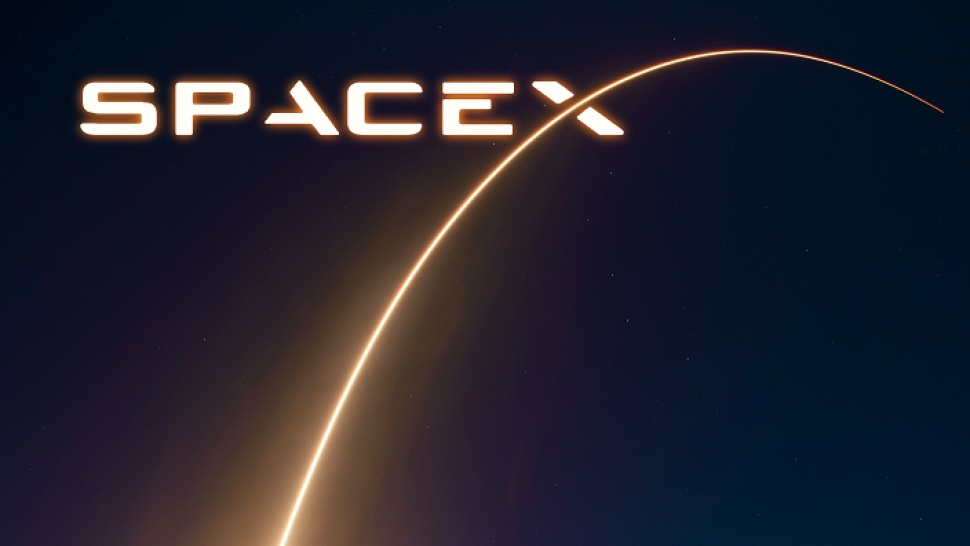Space Exploration Technologies Corporation, better known as SpaceX, is an American aerospace manufacturer and space transport services company headquartered in Hawthorne, California, USA. It was founded in 2002 by former PayPal entrepreneur and Tesla Motors CEO Elon Musk with the goal of creating the technologies to reduce space transportation costs and enable the colonization of Mars. It has developed the Falcon 1 and Falcon 9 launch vehicles, both designed to be reusable, and the Dragon spacecraft which is flown into orbit by the Falcon 9 launch vehicle to supply the International Space Station (ISS) with cargo. A manned version of Dragon is in development.
SpaceX's achievements include the first privately funded, liquid-propellant rocket (Falcon 1) to reach orbit, in 2008; the first privately funded company to successfully launch, orbit and recover a spacecraft (Dragon), in 2010; and the first private company to send a spacecraft (Dragon) to the ISS, in 2012. The launch of SES-8, in 2013, was the first SpaceX delivery into geosynchronous orbit, while the launch of the Deep Space Climate Observatory (DSCOVR), in 2015, was the company's first delivery beyond Earth orbit. On December 21, 2015, SpaceX successfully returned a first stage back to a landing pad near the launch site and accomplished a propulsive vertical landing, the first such accomplishment by a rocket on an orbital trajectory. On April 8, 2016, with the launch of CRS-8, SpaceX successfully vertically landed a first stage on an ocean drone platform and delivered Dragon to Low Earth Orbit. On May 6, 2016, SpaceX again landed a first stage, but on a geostationary transfer mission, another first.

Falcon 9
NASA awarded the company a Commercial Orbital Transportation Services (COTS) contract in 2006, to design and demonstrate a launch system to resupply cargo to the International Space Station (ISS). SpaceX, as of April 2016 has flown seven missions to the ISS under a cargo resupply contract. NASA also awarded SpaceX a contract in 2011 to develop and demonstrate a human-rated Dragon as part of its Commercial Crew Development (CCDev) program to transport crew to the ISS.
History
SpaceX was founded in June 2002 by Elon Musk; his vision was to build a simple and relatively inexpensive reusable rocket that would go into space multiple times; similar to the turn around time capabilities that commercial airliners currently exhibit.
- The first privately funded, liquid-fueled rocket (Falcon 1) to reach orbit (28 September 2008)
- The first privately funded company to successfully launch (by Falcon 9) orbit and recover a spacecraft (Dragon) (9 December 2010)
- The first private company to send a spacecraft (Dragon) to the International Space Station (25 May 2012)
- The first private company to send a satellite into geosynchronous orbit (SES-8, 3 December 2013)
- The first landing of a first stage orbital capable rocket (Falcon 9) (22 December 2015 1:39 UTC)
- The first water landing of a first stage orbital capable rocket (Falcon 9) (8 April 2016 20:53 UTC)
Funding
SpaceX is privately funded. It developed its first launch vehicle—Falcon 1—and three rocket engines—Merlin, Kestrel, and Draco—completely with private capital. SpaceX contracted with the US government for a portion of the development funding for the Falcon 9 launch vehicle, which uses a modified version of the Merlin rocket engine. SpaceX is developing the Falcon Heavy launch vehicle, the Raptor methane-fueled rocket engine, and a set of reusable launch vehicle technologies with private capital.
As of May 2012, SpaceX had operated on total funding of approximately $1 billion in its first ten years of operation. Of this, private equity provided about $200M, with Musk investing approximately $100M and other investors having put in about $100M (Founders Fund, Draper Fisher Jurvetson, ...). The remainder has come from progress payments on long-term launch contracts and development contracts. As of April 2012, NASA had put in about $400–500M of this amount, with most of that as progress payments on launch contracts. By May 2012, SpaceX had contracts for 40 launch missions, and each of those contracts provide down payments at contract signing, plus many are paying progress payments as launch vehicle components are built in advance of mission launch, driven in part by US accounting rules for recognizing long-term revenue.
Goals
Musk has stated that one of his goals is to improve the cost and reliability of access to space, ultimately by a factor of ten. The company plans in 2004 called for "development of a heavy lift product and even a super-heavy, if there is customer demand" with each size increase resulting in a significant decrease in cost per pound to orbit. CEO Elon Musk said: "I believe $500 per pound ($1,100/kg) or less is very achievable."
SpaceX has on occasion developed new engineering development technologies to enable it to pursue its various goals. In 2015, public sources revealed that SpaceX is developing their own computational fluid dynamics (CFD) software to improve the simulation capability of evaluating rocket engine combustion design.
In June 2015 the company asked the federal government for permission to begin testing for a project that aims to build a constellation of 4000 satellites capable of beaming the Internet to the entire globe, including remote regions which currently do not have internet access.
Mars
He stated in a 2011 interview that he hopes to send humans to Mars' surface within 10–20 years! In June 2013, Musk used the descriptor Mars Colonial Transporter to refer to the privately funded development project to design and build a spaceflight system of rocket engines, launch vehicles and space capsules to transport humans to Mars and return to Earth. In March 2014, COO Gwynne Shotwell said that once the Falcon Heavy and Dragon v2 crew version are flying, the focus for the company engineering team will be on developing the technology to support the transport infrastructure necessary for Mars missions.
Musk's long term vision for the company is the development of technology and resources suitable for human colonization on Mars. He has expressed his interest in someday traveling to the planet, stating "I'd like to die on Mars, just not on impact." To achieve it, Musk plans to establish cargo flights to Mars, getting the first delivery there by 2018. A rocket every two years or so after that could provide a base for the people arriving in 2025 after a launch in 2024. According to Steve Jurvetson, Musk believes that by 2035 at the latest, there will be thousands of rockets flying a million people to Mars, in order to enable a self-sustaining human colony.




Share the News